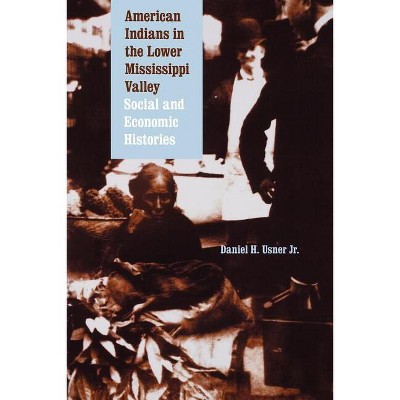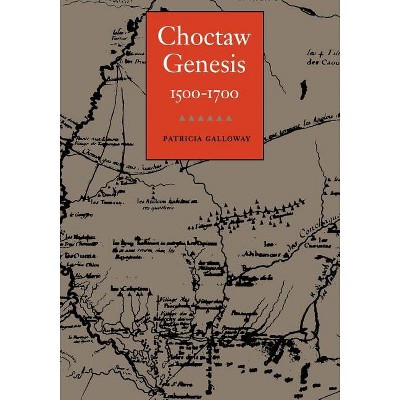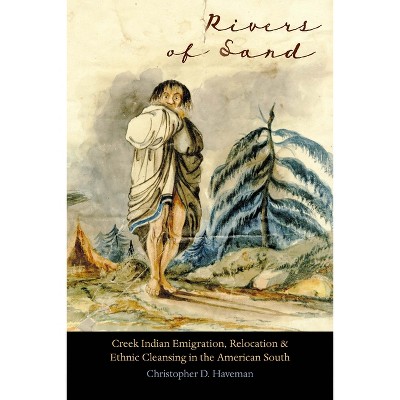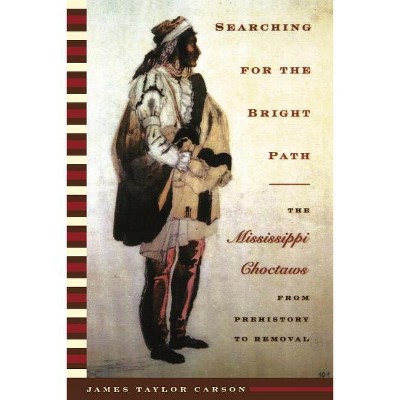Choctaw Resurgence in Mississippi - (Indians of the Southeast) by Katherine M B Osburn (Paperback)

About this item
Highlights
- When the Choctaws were removed from their Mississippi homeland to Indian Territory in 1830, several thousand remained behind, planning to take advantage of Article 14 in the removal treaty, which promised that any Choctaws who wished to remain in Mississippi could apply for allotments of land.
- About the Author: Katherine M. B. Osburn is an associate professor of history at Arizona State University.
- 342 Pages
- Social Science, Ethnic Studies
- Series Name: Indians of the Southeast
Description
About the Book
"When the Choctaws were removed from their Mississippi homeland to Indian Territory in 1830, several thousand remained behind, planning to take advantage of Article 14 in the removal treaty, which promised that any Choctaws who wished to remain in Mississippi could apply for allotments of land. When the remaining Choctaws applied for their allotments, however, the government reneged, and the Choctaws were left dispossessed and impoverished. Thus begins the history of the Mississippi Choctaws as a distinct people. Despite overwhelming poverty and significant racial prejudice in the rural South, the Mississippi Choctaws managed, over the course of a century and a half, to maintain their ethnic identity, persuade the Office of Indian Affairs to provide them with services and lands, create a functioning tribal government, and establish a prosperous and stable reservation economy. The Choctaws' struggle against segregation in the 1950s and 1960s is an overlooked story of the civil rights movement, and this study of white supremacist support for Choctaw tribalism considerably complicates our understanding of southern history. Choctaw Resurgence in Mississippi traces the Choctaw's remarkable tribal rebirth, attributing it to their sustained political and social activism. "--Book Synopsis
When the Choctaws were removed from their Mississippi homeland to Indian Territory in 1830, several thousand remained behind, planning to take advantage of Article 14 in the removal treaty, which promised that any Choctaws who wished to remain in Mississippi could apply for allotments of land. When the remaining Choctaws applied for their allotments, however, the government reneged, and the Choctaws were left dispossessed and impoverished. Thus begins the history of the Mississippi Choctaws as a distinct people.
Despite overwhelming poverty and significant racial prejudice in the rural South, the Mississippi Choctaws managed, over the course of a century and a half, to maintain their ethnic identity, persuade the Office of Indian Affairs to provide them with services and lands, create a functioning tribal government, and establish a prosperous and stable reservation economy. The Choctaws' struggle against segregation in the 1950s and 1960s is an overlooked story of the civil rights movement, and this study of white supremacist support for Choctaw tribalism considerably complicates our understanding of southern history. Choctaw Resurgence in Mississippi traces the Choctaw's remarkable tribal rebirth, attributing it to their sustained political and social activism.
Review Quotes
"Choctaw Resurgence in Mississippi rests on extraordinary amounts of newly uncovered sources, with an unusually high degree of originality."--Ted Ownby, Center for the Study of Southern Culture, University of Mississippi.
-- (9/23/2013 12:00:00 AM)
"In this extensively researched book, Osburn presents a compelling history of the Mississippi Choctaws and sheds new light on these often forgotten people."--Sheri M. Shuck-Hall, author of Journey to the West: The Alabama and Coushatta Indians
-- (9/23/2013 12:00:00 AM)
About the Author
Katherine M. B. Osburn is an associate professor of history at Arizona State University. She is the author of Southern Ute Women: Autonomy and Assimilation on the Reservation, 1885-1934 (Nebraska, 2008).
Shipping details
Return details
Trending Poetry











